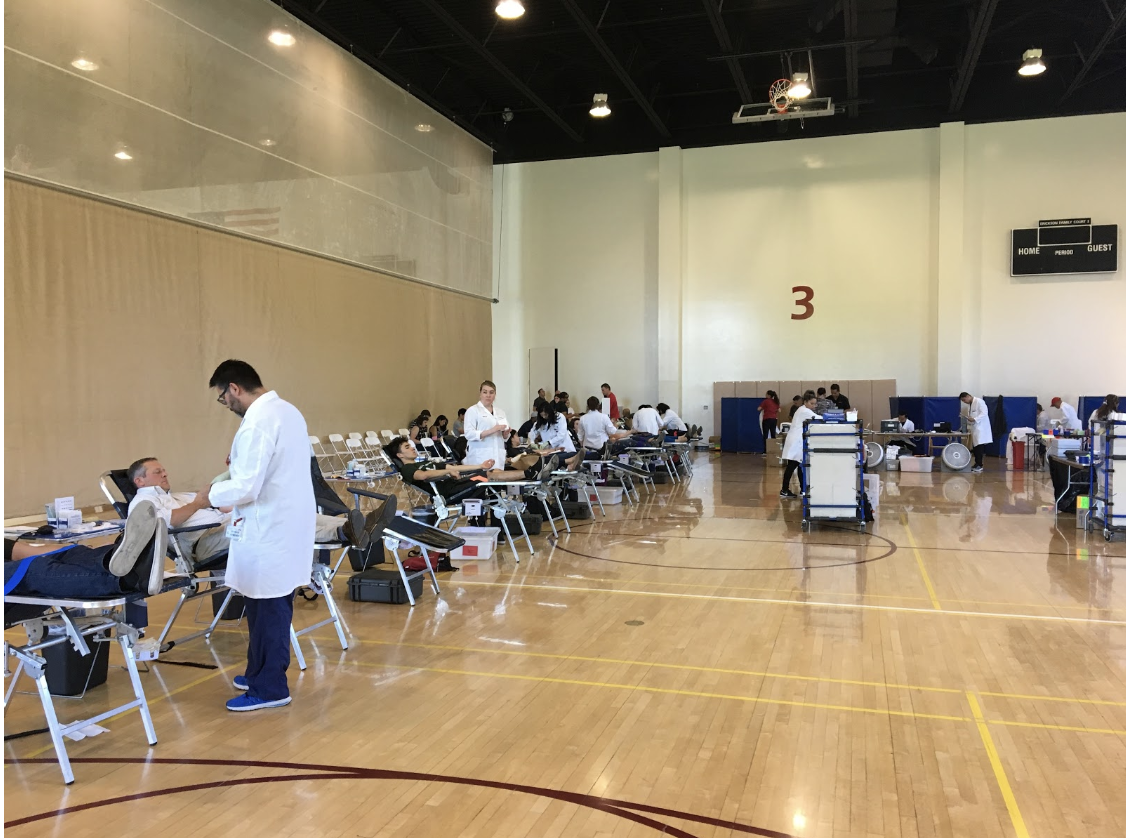The Stanford Blood Center partnered with the on-campus initiative Stanford BeWell to host its third blood drive at the Arrillaga Center for Sports and Recreation on Jun. 29. The drive was open to Stanford staff, students and members of the general public and lasted from 10 a.m. to 4 p.m.
The drive collected 148 units of red blood cells from 140 donors, 39 of whom had not given blood before, according to Elisa Manzanares, the Stanford Blood Center account manager who has organized all blood drives with Stanford BeWell.
Compared to last year’s BeWell drive, this event saw an uptick in first-time donors but a decrease in overall participation. In 2017, the drive resulted in 155 units of blood and 175 total donors, 33 of whom were first-time donors.
Of the 140 donors, Manzanares reported that 9 were double red cell donors. These donors give twice the number of red blood cells than the number received through the regular blood donation process; a machine extracts their blood, retrieves only red blood cells and then returns the rest of the blood back into the body on a continuous loop. These donors also tend to be men, as male red blood cell counts are generally higher.
As the Stanford Blood Center was facing a shortage of O+ blood before the drive, Manzanares said that she hoped to see a few O+ donations at the blood drive. According to the Stanford Blood Center’s website update, there were enough O+ donations to pull the blood center out of its shortage.
“One of the most important aspects of the planning process is advertising to generate as much participation as possible,” said Manzanares.
Organizers emphasized outreach to attract as many people as possible to the event. Stanford BeWell emailed hundreds of people on a mailing list weeks before the drive. The majority of the donors at the event were staff members or students from part of the Stanford community. Dozens of Stanford Blood Center staff members and volunteers worked together to set up chairs and donation stations on the morning of the event.
Donors cited a variety of reasons why they chose to give blood. For Stanford Administrative Associate Sarah Larson, a childhood incident was a major motivator to donate.
“I donate because when I was sixteen, I had to get back surgery and I basically had to give myself blood,” Larson said. “I wanted to help others in the same situation and then I found out I was O+, which can help a lot of people.”
As soon as blood was drawn and bagged, organizers sent it to the Stanford Blood Center in Palo Alto where it is tested and stored. After testing and careful storing, the blood is sent to multiple facilities for research and health purposes, with Stanford Hospital and Lucile Packard Children’s Hospital being the largest recipients. White blood cells are often sent to research programs so that none of the blood is wasted.
Contact Sahana Sridhar at sahanisri ‘at’ gmail.com
